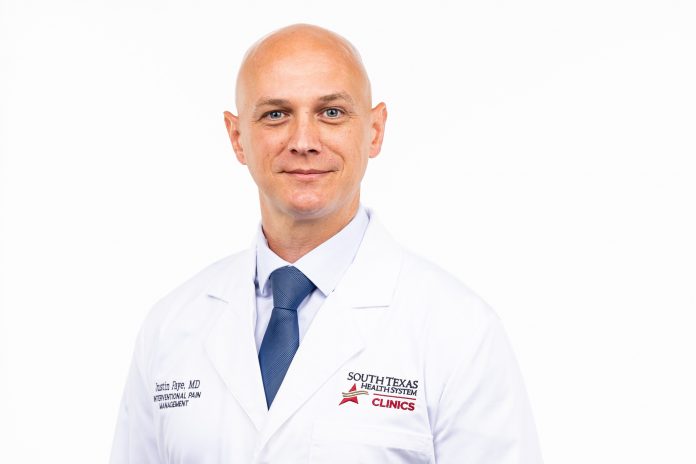Tips for Understanding and Combatting Head Pain from a Pain Medicine Specialist
Nearly everyone has experienced the discomfort of a headache. In fact, according to the National Institute of Neurological Disorders and Stroke, headaches are the most common form of pain. That makes them a major reason for both missed workdays and visits to the doctor. But, as common as headaches are, it can be confusing to understand what may be causing them and, more importantly, what you can do about them. Below, Justin Faye, MD, a physician with South Texas Health System® Clinics who specializes in pain medicine, answers some commonly asked questions about this all-too-common condition.
Q. What’s happening in my body when I have a headache?
A. The scientific breakdown of a headache is this: nerves are set off by a trigger and signal messages to the brain that cause head pain. The pain can be dull and achy, sharp and stabbing or tight around the head, like something is squeezing you.
Q. Is there a difference between headaches and migraines?
A. When we say we have a migraine, it’s usually considered to be a more painful headache, but there’s more to it. A headache is only one of the many possible migraine symptoms. Migraines can also cause extreme sensitivity to light and sound, as well as nausea. They can also last for days. A person may notice visual aura, which could look like blurriness around the perimeter or center of their vision.
Q. What causes head pain? Are there any specific triggers?
Nerves can be triggered by many different things, making it hard at times to determine why a headache has occurred. The most common causes of headaches and migraines are as follows:
• Stress or anxiety
• Diet
• Lack of sleep
• Alcohol intake
• Hormones
• Trauma
• Sudden changes in weather
• Caffeine
• Medication
Triggers can vary from person to person, so your headache trigger might look different than what’s on this list.
Q. What are some effective remedies?
Over-the-counter pain remedies are often recommended as an at-home option. Alongside pain relievers, getting uninterrupted rest in a cool, dark room can also help. However, if your headache doesn’t subside with rest and medication, it may be time to speak to your doctor and discuss other options. It’s possible for headaches to point to other underlying issues.

Justin Faye, MD
Pain Medicine
Dr. Faye earned his medical degree from St. George’s University School of Medicine, in Grenada. He then completed his general surgery internship at Baylor College of Medicine in Houston, his physical medicine and rehabilitation residency at One Brooklyn Health System in Brooklyn, New York, and his pain medicine fellowship at Eastern Virginia Medical School in Norfolk, Virginia.
TO MAKE AN APPOINTMENT:
Schedule online at sthsclinics.com or call 956-731-0504
STHS Clinics Pain Management – McAllen
1801 South 5th Street, Suite 209
McAllen, TX 78503
Virtual Visits Available | Walk-ins Welcome
Accepts Medicare, Medicaid, Workers’ Compensation, VA insurance, TRICARE®, and most medical insurance plans.
For language assistance, disability accommodations and the nondiscrimination notice, visit our website. TRICARE® is a registered trademark of the Department of Defense, Defense Health Agency. All rights reserved.
Sources:
*https://www.ninds.nih.gov/health-information/disorders/headache#toc-what-is-a-headache-
*https://medlineplus.gov/migraine.html
*https://www.ninds.nih.gov/health-information/disorders/headache




